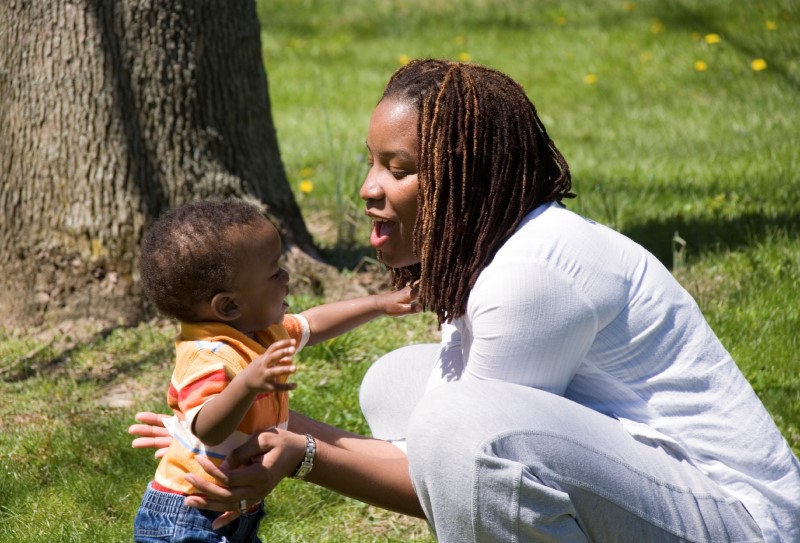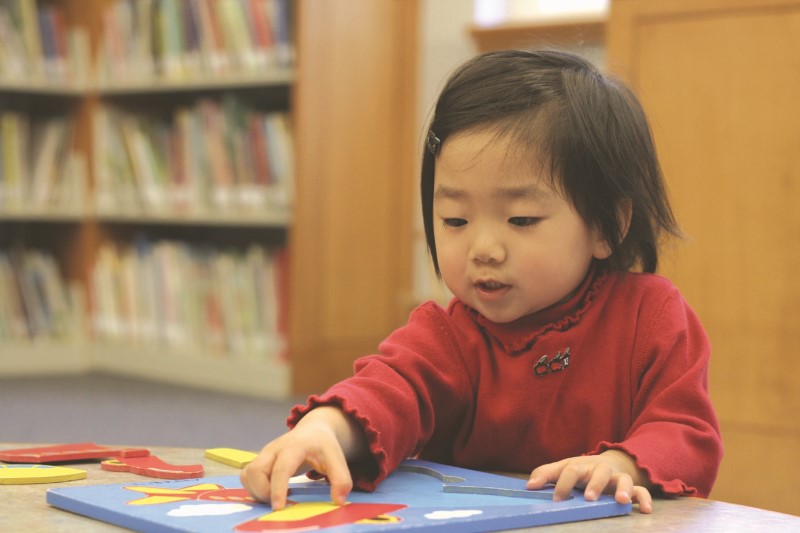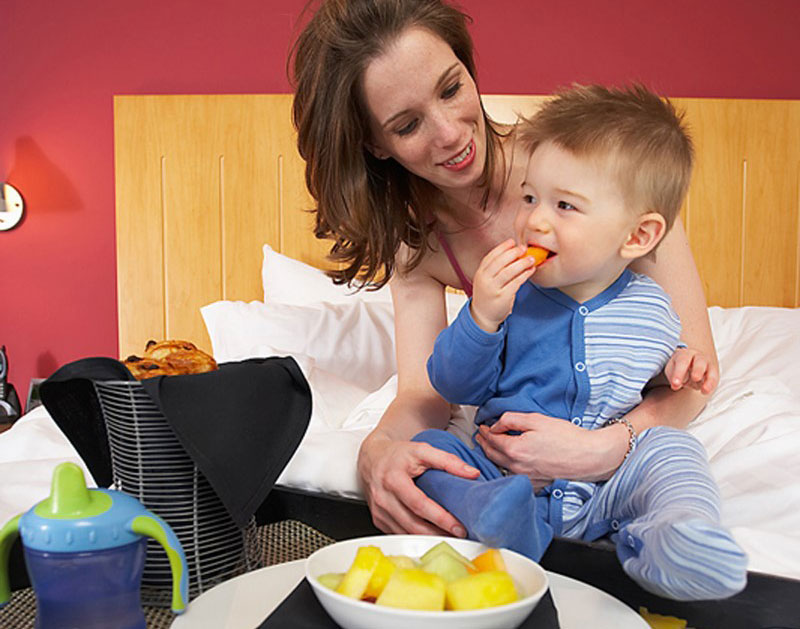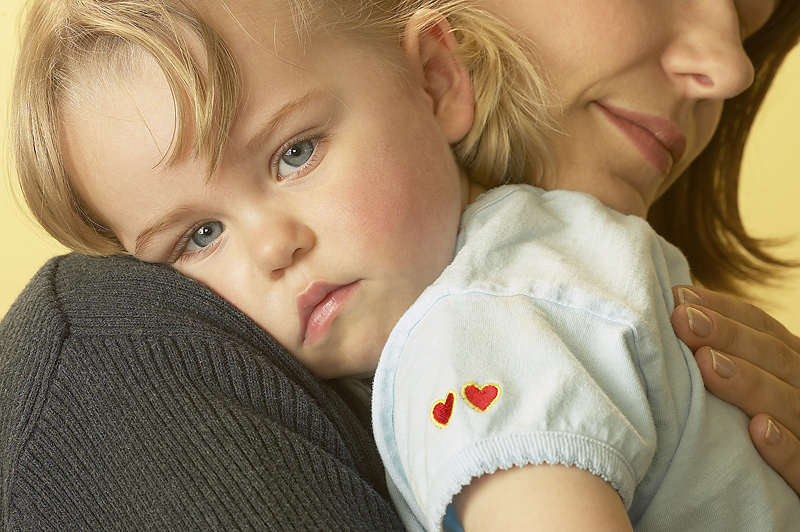
Your toddler is learning how things move. If he likes dropping something from his high chair, give him a paper napkin to drop and let him watch how the air moves it.
Bounce! Give him a sponge or stuffed toy to throw. He likes to hear the sounds things make when they hit the floor.
Splat! Tell him the names of things and what they do. Roll, bounce, splat. He will soon find out that things that go splat get your attention.
Keep time to music. Bounce your child gently on your knee or lap or clap with him in time to music. You will both have fun moving with the music.
Let him have space indoors and outdoors to practice crawling and walking. He is going to be running by the end of the year. Right now, let him practice, practice, practice.
Toddlers are on the move! They are crawling, scooting, and walking. Their world is full of new things to touch, throw, climb on, and to fall from or knock down.
You need lots of energy. Your quiet, cuddly baby has become a lively little person and that means you have to be lively too. That can be fun, but it can make you tired, anxious, or angry. Give yourself the care you need to feel rested, healthy and energetic.
Playpens are okay when you need to rest or to calm down, but keep playpen times brief. Help your child discover new things safely. Learning about her surroundings makes her feel good about herself and her world.

“Where is _____ ??” helps your child learn to turn pages and look at pictures.
- Sit with your child on your lap.
- Read a picture book to your child.
- Encourage your child to find things pictured in the book. “Where’s the rabbit? Find the bird. What is the boy doing? Is he playing with the toy?”
Reading alone helps your child learn small motor coordination.
- Ask your child, “Do you want to read?”
- If yes, turn the pages of a book or magazine a few times and point to some pictures.
- Let your child look at the book alone.
Give your child meals and snacks at about the same time every day. He will feel better if he knows he is going to have food at regular times. If he doesn’t, he is apt to be crabby and cranky. He might overeat when he finally does get food, because he is not sure when he is going to eat again.
Eating in the morning gives your child energy. He might not want to eat just after he wakes up. That’s OK. He will probably be ready for food in a half hour or so.
Regular healthy snacks are important. Children have small stomachs and may get hungry within a couple of hours after a meal. Snacks at midmorning and mid afternoon keep him healthy.
Plan to eat at about the same time every day. Most people eat a meal around noon, and they may eat another meal about 5 or 6 p.m.
- You can plan the times of meals around what you have to do during the day.
- If your child refuses to eat at mealtime — but then asks for a snack immediately afterwards — you may want to tell him he must wait until snack time.
Help your child learn to eat the healthy foods you’ve prepared. If your child doesn’t want to eat what you’ve prepared, don’t fix something different just for him. Remind him that this is what everyone in the family is eating. Tell him it will be a while before the next meal or snack. If he still insists he is not going to eat, quietly remove his plate. Let him leave the table if he wants to.

You may feel like you have too much to do, not enough time, not enough money, nobody to help out. If you feel that way sometimes, you’re not alone. We all feel like the world is closing in sometimes.
Some stress is good for us – it makes us want to get up, get moving and get things done. When stress gets too heavy, it can hurt you. You might have headaches or trouble sleeping. You may feel angry all the time, even when nothing is happening. Stress can do real harm to your health and your relationships with your family, children, and friends.
Stress is normal. Learn to recognize the signs of stress in your own body – so you keep it at a good level, and don’t get too stressed. You may feel your muscles tighten, your hands might sweat, or your breathing might get heavy and fast.
Find help for too much stress.
- Talk to others about how you feel.
- Learn what other people do when they get “stressed out.”
- Try different ideas for coping with stress — self-help groups, parent stress hot lines, exercise and/or time out for yourself.
Take charge of managing your own stress. Find out what works for YOU.

Take an extra minute or two at bath time to let your child have fun. Keep some toys just for water play. Plastic containers, measuring cups, spoons, and funnels all make fine bath toys. Be sure to wash them before giving them to your toddler.
Name body parts. Point to each body part while you say, “Here’s your nose; here are your eyes.“ Soon your child will be able to point to the right part when you say the name.
Splash! When your child sits in the water, you can sing, “One hand splash, other hand splash, up, down, splash, splash all around.”
Remember always to stay in the bathroom with your child. She is not old enough to bathe alone and could easily fall or slip under the water.








